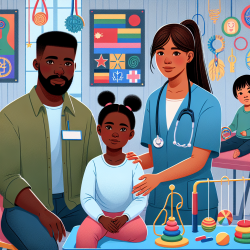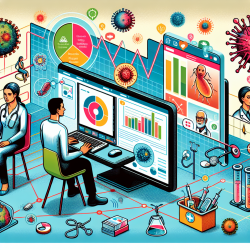Introduction
In the ever-evolving field of speech-language pathology, practitioners are constantly seeking innovative ways to improve outcomes for children. One promising avenue is the integration of mobile health (mHealth) applications into therapeutic practices. Drawing insights from the development and usability study of the Infotility app, a tool designed to support fertility patients, we can explore how similar strategies might enhance speech therapy for children.
The Power of mHealth Apps
The Infotility app was created to address the psychoeducational and psychosocial needs of fertility patients. It provided a clinician-approved resource for reliable information and a confidential peer support forum. The app was well-received, with participants rating its engagement, functionality, information, and aesthetics positively. This success underscores the potential of mHealth apps to empower users by providing accessible, reliable information and support.
Applying Infotility's Success to Speech Therapy
While the Infotility app focused on fertility, the principles of its development can be applied to speech therapy. Here are key takeaways:
- Needs Assessment: Conduct surveys and interviews with stakeholders, including children, parents, and therapists, to understand the specific needs and preferences for a speech therapy app.
- Content Development: Develop content that is evidence-based and tailored to the needs of children with speech and language disorders. This could include interactive exercises, video demonstrations, and progress tracking.
- User-Centered Design: Design the app with the end-user in mind, ensuring it is engaging and easy to navigate. Incorporate feedback from usability testing to refine the app's interface and functionality.
- Peer Support: Integrate a feature that allows parents and therapists to connect, share experiences, and offer support, similar to Infotility's peer support forum.
Encouraging Further Research
The development of the Infotility app adhered to the Medical Research Council guidelines for complex interventions, providing a structured framework that can be replicated in other fields. Speech-language pathologists are encouraged to conduct further research into the application of mHealth tools in therapy, exploring their potential to enhance engagement, adherence, and outcomes in speech therapy for children.
Conclusion
By leveraging the insights from the Infotility app's development and evaluation, speech-language pathologists can explore new ways to integrate mHealth technology into their practice. This approach not only promises to enhance therapeutic outcomes but also empowers children and their families by providing accessible, reliable support and information.
To read the original research paper, please follow this link: An mHealth App to Support Fertility Patients Navigating the World of Infertility (Infotility): Development and Usability Study.










